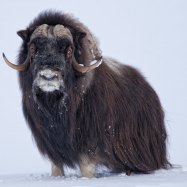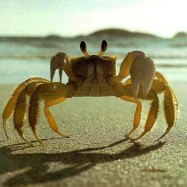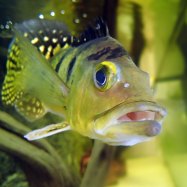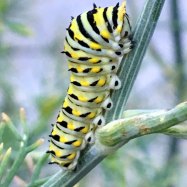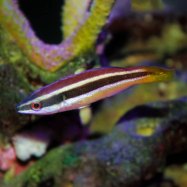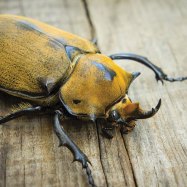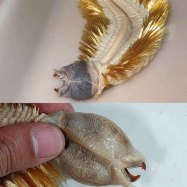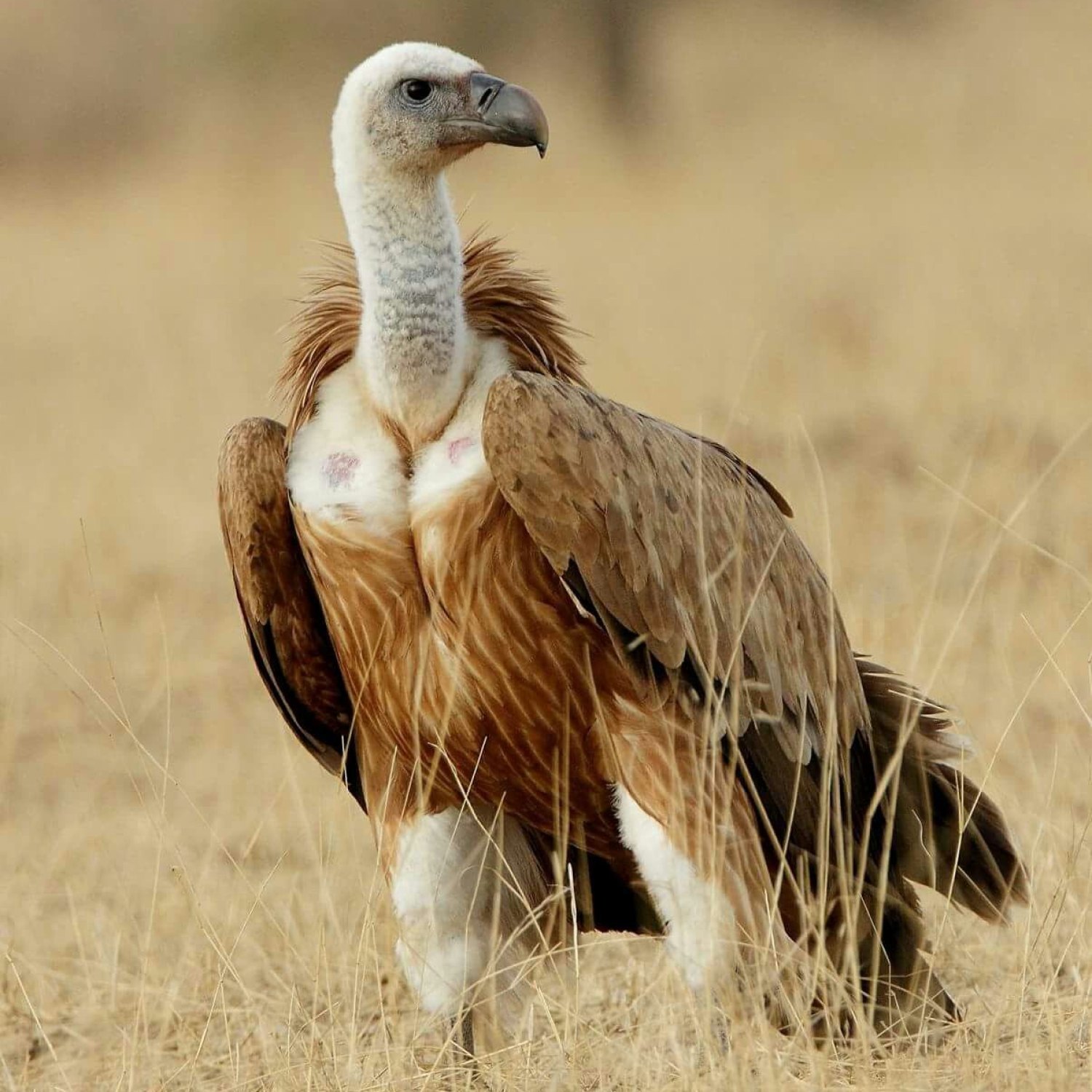
Griffon Vulture
95-105 cm
Meet the magnificent Griffon Vulture, one of the largest and most widespread vulture species in Europe and parts of northern Africa. With a wingspan of up to 2.5 meters and a body length of 95-105 cm, this bird of prey can be spotted soaring over mountainous landscapes in Spain, France, Greece, and more. Learn more about these impressive birds and their role in maintaining the balance of ecosystems as scavengers. #GriffonVulture #birdofprey #ecosystem #wildlife
Animal Details Summary:
Common Name: Griffon Vulture
Kingdom: Animalia
Habitat: Mountains, hills, and rocky cliffs
The Graceful Giant: The Fascinating World of the Griffon Vulture
The world is full of diverse and magnificent creatures, each with its own unique characteristics and adaptations. One such creature is the griffon vulture, also known by its scientific name Gyps fulvus. These birds of prey are fascinating creatures that have captured the attention of many nature lovers and scientists alike. In this article, we will delve into the world of the griffon vulture and discover what makes them such remarkable animals Griffon Vulture.The Basics: Taxonomy and Distribution
Before we dive into the details, let's first understand the taxonomy and distribution of the griffon vulture. This magnificent bird belongs to the Animalia kingdom, the Chordata phylum, and the Aves class, along with other birds. It is categorized under the Accipitriformes order and the Accipitridae family, along with other birds of prey.The griffon vulture is a widespread species, found in three continents - Europe, Asia, and Africa. Its country of origin is Spain, and it is mainly found in the mountains, hills, and rocky cliffs. However, they can be seen in other countries such as France, Greece, Bulgaria, Turkey, Israel, Jordan, and parts of northern Africa.
The Physical Appearance of the Griffon Vulture
The griffon vulture is a large and bulky bird with an average length of 95-105 cm and a weight of 7-11 kg. Its body shape is designed for efficient soaring and gliding, with broad wings and a relatively short tail. Its wingspan can reach up to 2 Giant Golden Mole.8 meters, making it one of the largest birds of prey in Europe.The coloration of the griffon vulture is mostly brown, with a lighter head, neck, and underparts that are creamy white. Juveniles have a darker coloration, which gradually lightens as they mature. This coloration acts as camouflage, helping them blend into their surroundings while they soar through the skies in search of food.
Feeding Habits and Adaptations
The griffon vulture is a carrion feeder, meaning it primarily feeds on dead animals. They have excellent eyesight, and their keen sense of smell allows them to find carcasses from great distances. Once they spot a carcass, they will circle above it and wait until other griffon vultures join them. They have a unique feeding hierarchy, with the most dominant birds getting the first pick.One of the most fascinating adaptations of the griffon vultures is their acidic digestive system. These birds have a highly acidic stomach, which allows them to consume and digest bones, fur, and other animal parts that may be toxic to other animals. This adaptation gives them the ability to clean up the environment by feeding on carcasses that would otherwise pollute the area.
Behavior and Social Structure
Griffon vultures are highly social birds and are generally seen in large flocks. In addition to feeding together, they also roost and nest in groups. They are monogamous birds, and the pair bond remains for the duration of the breeding season. They build large nests in cliffs or on the ground, and both parents take turns incubating the eggs and caring for the chicks.Despite their large size, griffon vultures are graceful and agile birds when soaring through the air. They can reach heights of up to 10,000 feet and can travel up to 150 km in a day in search of food. They use thermal currents and updrafts to stay airborne, barely flapping their wings as they glide through the air.
The Threats and Conservation Efforts
Unfortunately, the griffon vulture is facing several threats, leading to a decline in their population. One of the main threats is poisoning, as these birds often consume poisoned carcasses intended for other animals. They are also victims of habitat loss, as their natural habitats are being destroyed for human development.Thankfully, there are various efforts in place to protect and conserve the griffon vulture. Spain, in particular, has implemented several conservation programs, including the "Vulture Safe Program," aimed at reducing vulture poisoning. Organizations such as the Vulture Conservation Foundation and the European Wildlife Foundation are also working towards protecting the populations of these magnificent birds.
The Role of Griffon Vultures in the Ecosystem
Griffon vultures play a crucial role in the ecosystem as scavengers and recyclers. By consuming carcasses, they help prevent the spread of disease and keep the environment clean. They also provide food for other organisms, such as insects and small mammals, and their large nesting sites offer shelter for other birds and animals.Moreover, the presence of griffon vultures in an area is an indicator of a healthy ecosystem. As scavengers, they require a constant supply of carcasses, which means that their presence indicates an abundance of prey and a healthy food chain.
The Cultural Significance of Griffon Vultures
Griffon vultures have been a part of various cultures and religions throughout history. In Greek mythology, they were known as the "birds of Apollo" and were considered symbols of prophecy and divinity. They were also associated with healing, and some believed that their feathers had medicinal properties. In Spain, they are considered sacred and are referred to as "catadores," meaning "cleaners of the dead."Furthermore, the griffon vulture has a crucial role in the ecosystem of the Doñana National Park in Spain, which is a UNESCO World Heritage Site. This park is home to various endangered species, and the presence of the griffon vulture not only helps maintain the balance of the ecosystem but also attracts tourists and supports the local economy.
Conclusion
In conclusion, the griffon vulture is an incredible bird with many admirable qualities and adaptations. From their majestic appearance to their vital role in the ecosystem, they are truly remarkable creatures. However, their populations are facing various threats, highlighting the need for conservation efforts and a better understanding of these birds. It is our responsibility as humans to protect and preserve these graceful giants and the ecosystems they inhabit for future generations to appreciate and admire.

Griffon Vulture
Animal Details Griffon Vulture - Scientific Name: Gyps fulvus
- Category: Animals G
- Scientific Name: Gyps fulvus
- Common Name: Griffon Vulture
- Kingdom: Animalia
- Phylum: Chordata
- Class: Aves
- Order: Accipitriformes
- Family: Accipitridae
- Habitat: Mountains, hills, and rocky cliffs
- Feeding Method: Carrion feeder
- Geographical Distribution: Europe, Asia, and Africa
- Country of Origin: Spain
- Location: Griffon Vultures can be found in Spain, France, Greece, Bulgaria, Turkey, Israel, Jordan, and parts of northern Africa.
- Animal Coloration: Mostly brown with a white head, neck, and underparts
- Body Shape: Large and bulky
- Length: 95-105 cm
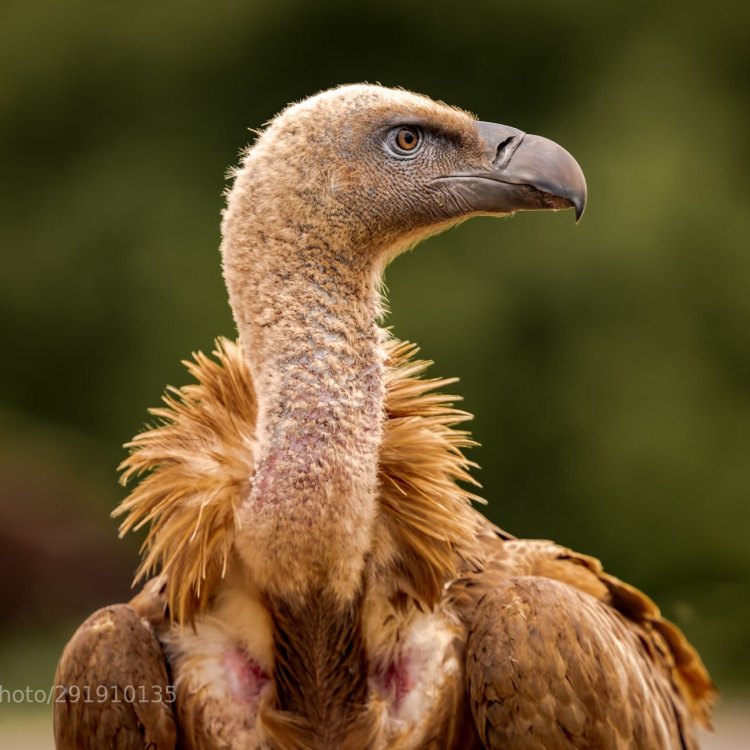
Griffon Vulture
- Adult Size: Wingspan of 2.5-2.8 meters
- Average Lifespan: Up to 40 years in the wild
- Reproduction: Sexual
- Reproductive Behavior: Monogamous
- Sound or Call: Loud grunts and hisses
- Migration Pattern: Migratory
- Social Groups: Colonial
- Behavior: Highly social and gregarious
- Threats: Habitat loss, poisoning, and collision with power lines
- Conservation Status: Near Threatened
- Impact on Ecosystem: Carrion disposal
- Human Use: Tourism and photography
- Distinctive Features: Long wings and a white head, neck, and underparts
- Interesting Facts: Griffon Vultures are one of the largest birds in Europe and have a wingspan that can reach up to 2.8 meters.
- Predator: No natural predators
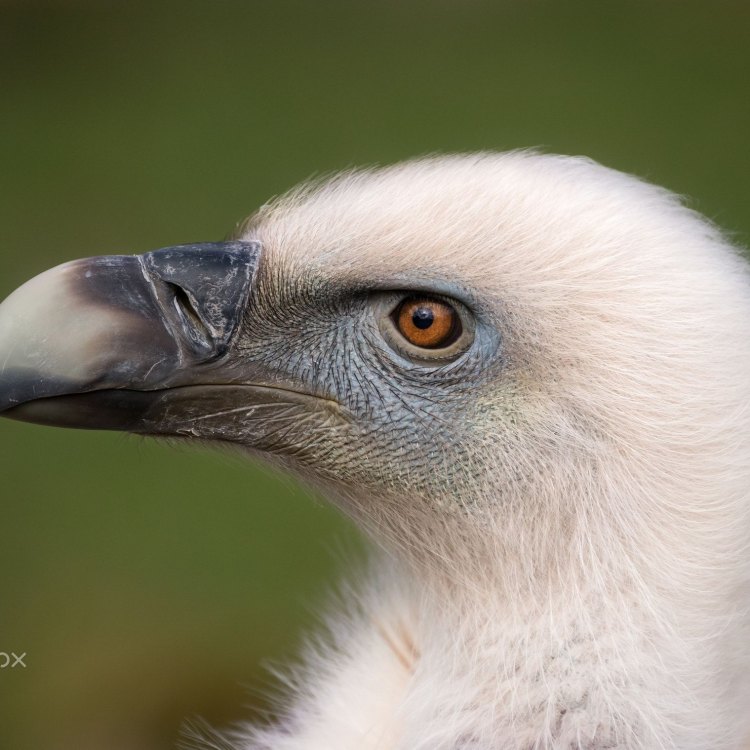
Gyps fulvus
The Majestic Griffon Vulture: A Unique and Crucial Member of the Ecosystem
The Griffon Vulture, also known as Gyps fulvus, is a magnificent bird that can be found soaring across the skies of Europe. With a wingspan of 2.5-2.8 meters, it is one of the largest birds in the continent PeaceOfAnimals.Com. But what sets this bird apart from others is not just its impressive size, but also its important role in the ecosystem and its unique features.In this article, we will explore the fascinating world of the Griffon Vulture, from its behavioral patterns to its vital impact on the environment.
The Size and Lifespan of the Griffon Vulture
The first thing that strikes anyone who sees a Griffon Vulture is its enormous size. With a wingspan of 2.5-2.8 meters, it is one of the largest raptors in the world. This wingspan allows the bird to glide effortlessly over long distances without flapping its wings. Its body length can range from 93-122 cm, and it can weigh up to 11 kg.But size isn't the only impressive thing about the Griffon Vulture Garter Snake. It also has an incredibly long lifespan, living up to 40 years in the wild. This is quite remarkable for a bird, as most large birds tend to have a shorter lifespan. So, what makes this possible?
Reproductive Behavior of the Griffon Vulture
The Griffon Vulture is a sexual and monogamous bird, meaning they form a pair bond with one mate for life. Each breeding season, the pair constructs a large stick nest on cliffs, which they then use to lay their eggs. These birds are highly territorial, and the pair fiercely defends their nest from intruders.Female Griffon Vultures lay one to two eggs per year, and both parents take turns incubating the eggs for about 55 days. Once the chicks have hatched, they stay in the nest for around 3 months, and the parents take turns feeding and caring for them. This level of dedication and care contributes to their long lifespan.
Communication and Behavior of the Griffon Vulture
Griffon Vultures are highly social and gregarious birds, living in large colonies of a few hundred pairs. They can be seen flying in groups and perching together on cliffsides. These birds have a distinct hierarchy within their groups, with dominant birds getting the best perching and feeding spots.Along with body language, Griffon Vultures communicate through loud grunts and hisses. These calls can be heard from long distances and often indicate the location of a food source. These birds are also very observant of other vultures' behaviors, which allows them to quickly find food by following other vultures to a carcass.
The Threats Facing the Griffon Vulture
Unfortunately, several threats are endangering the Griffon Vulture's population. Habitat loss, due to human activities such as agriculture and urbanization, is a significant concern for these birds. This loss of habitat leads to a decline in their food source, as well as suitable nesting and roosting sites.Another major threat to the Griffon Vulture is poisoning. These birds are often victims of poisoned carcasses left out by farmers or shepherds to control predators. Vultures are also at risk of colliding with power lines, as they often fly low to the ground while searching for food.
Conservation Status and the Impact on Ecosystem
The Griffon Vulture is currently classified as 'Near Threatened' on the IUCN Red List, which is just one step away from being listed as a vulnerable species. The decline in their population is a severe concern, as these birds play a crucial role in the ecosystem.As scavengers, Griffon Vultures play a vital role in cleaning up carcasses and preventing the spread of diseases. They can consume up to 2 kg of meat in one sitting, and a colony of vultures can clean up a large carcass in a matter of hours. This not only prevents the spread of disease but also contributes to nutrient recycling in the ecosystem.
The Human Use of Griffon Vultures
Griffon Vultures, with their majestic appearance and impressive behavior, attract many tourists and photographers. In some areas, these birds are the main attraction for birdwatchers and wildlife enthusiasts. This interest in the species can benefit their conservation by raising awareness and generating income for conservation efforts.However, it is crucial to note that these birds are wild animals and should be respected and observed from a distance. Any disturbance to their natural behavior can have negative impacts on their breeding and survival.
Distinctive Features of the Griffon Vulture
Apart from their impressive size and lifespan, the Griffon Vulture has several distinctive physical features. These birds have long wings, which they use to soar for hours without much effort. The feathers on their head, neck, and underparts are white, while the rest of their body is a dark brown color. This creates a stunning contrast and makes them easily recognizable.Griffon Vultures also have powerful, hooked beaks that they use to tear through tough animal hides, and they have strong, sharp talons for gripping and killing prey. These physical traits make them perfectly adapted for their role as scavengers in the ecosystem.
Interesting Facts About Griffon Vultures
Here are some fascinating facts about Griffon Vultures that make them even more unique and impressive:- They are one of the largest birds in Europe and have one of the largest breeding ranges, spanning across Europe, Asia, and North Africa.
- These birds are one of the few birds that can digest and safely consume anthrax-infected carcasses, making them vital for preventing the spread of this disease.
- Griffon Vultures have no natural predators in the wild, as they often travel in large groups and have a formidable size and wingspan.
- They have been featured prominently in various cultures and religions, often symbolizing power, death, and rebirth.
In Conclusion
The Griffon Vulture is a truly remarkable bird, with its impressive size, long lifespan, and important role in the ecosystem. However, the decline in their population is a concerning issue, and efforts must be made to protect and conserve these magnificent creatures. As humans, it is our responsibility to coexist with and appreciate the unique creatures that share our planet. Let us work towards preserving and celebrating the beauty and importance of the Griffon Vulture.
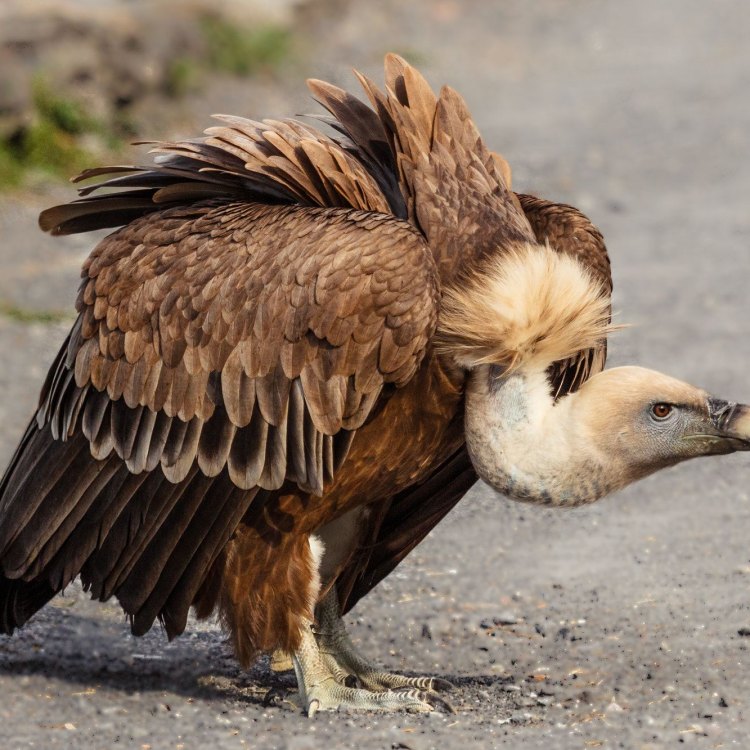
The Graceful Giant: The Fascinating World of the Griffon Vulture
Disclaimer: The content provided is for informational purposes only. We cannot guarantee the accuracy of the information on this page 100%. All information provided here may change without prior notice.

